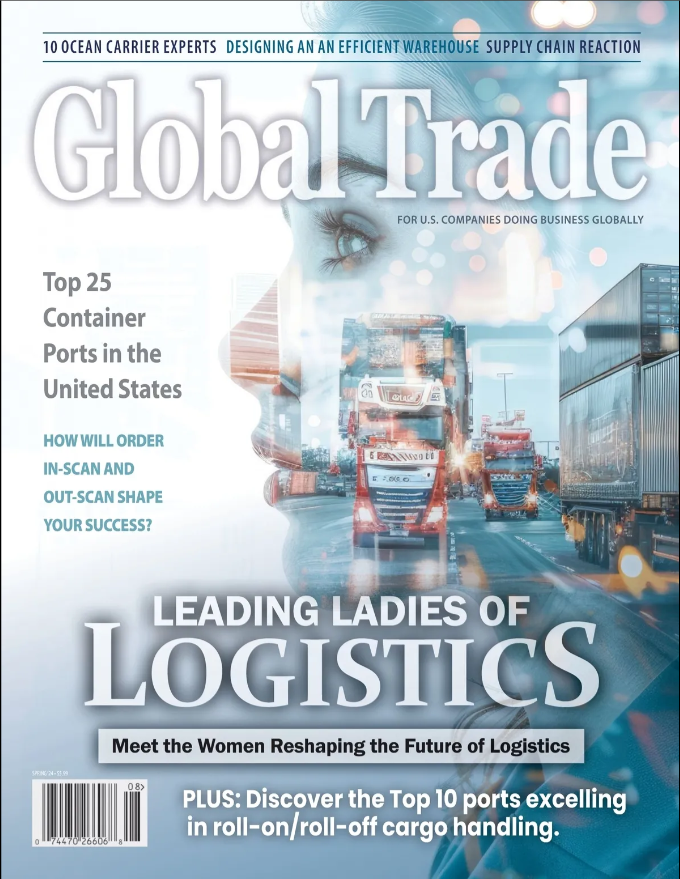TESLA’S CEO DISRUPTS LOGISTICS TRANSPORTATION
For proof that Elon Musk is an innovator when it comes to logistic transportation—as opposed to, in this exercise, space travel, electric cars, solar power, hyperloops, artificial intelligence, neurotechnology, tunnel boring and flame throwers—we turn not to his associated company (Tesla) but a competitor (Volvo).
“Tesla shook up the whole industry and made it go a little bit faster,” conceded Volvo Trucks North America President Peter Voorhoeve late last year of the race to get electric big rigs on the road.
He is referring to Musk’s January 2018 announcement from a stage displaying a Tesla Semi that shortly thereafter delivered battery packs from his Gigafactory 1 in Sparks, Nevada, to Tesla Factory in Fremont, California,
After that maiden 239-mile cargo trip, Tesla Semi prototypes were spotted sporadically last year, although it was unknown whether there was anything inside the trailers they were hauling. The suspense ended this past January, when Jerome Guillen, Tesla’s president of Automotive and vice president of Truck programs, shared on LinkedIn a photo of a Model X sedan being loaded on a car carrier trailer attached to a Tesla Semi.
The Tesla Semi is promised to deliver a far better experience for truck drivers, while increasing safety and significantly reducing the cost of cargo transport. Without a trailer, it is said to achieve 0-60 mph in five seconds, compared to 15 seconds in a comparable diesel truck. It does 0-60 mph in 20 seconds with a full 80,000-pound load, a task that takes a diesel truck about a minute. Most notably for truck drivers and other travelers on the road, it climbs 5 percent grades at a steady 65 mph, whereas a diesel truck maxes out at 45 mph on a 5 percent grade.
Semis require no shifting or clutching for smooth acceleration and deceleration, and its regenerative braking recovers 98 percent of kinetic energy to the battery, giving it a basically infinite brake life. Overall, the Tesla Semi promises more responsiveness, covering more miles than a diesel truck in the same amount of time, while more safely integrates with passenger car traffic.
Reservations of $20,000 per Tesla Semi are being taken, with production slated to begin this year. But other car makers are not taking those prospects lying down. Volvo Trucks on Dec. 12 announced it will introduce all-electric Volvo VNR regional-haul demonstrators in California later this year, operating in distribution, regional-haul and drayage operations, with sales of the VNR Electric in North America scheduled to begin in 2020.
“The Volvo VNR Electric leverages the versatility of the new Volvo VNR series with a proven fully-electric powertrain, and represents a strategic stride toward a comprehensive electrified transport ecosystem,” Voorhoeve said at the time. “Cities prioritizing sustainable urban development can leverage electrified transport solutions to help improve air quality and reduce traffic noise. Cleaner, quieter, fully-electric commercial transport also creates opportunities for expanded morning and late-night operations, helping cut traffic congestion during peak hours.”
Mack Trucks, Peterbilt, Freightliner and Navistar are also in various stages of testing with electric trucks, and Ryder recently ordered 1,000 battery-electric Chanje panel vans to be put in service in the next two years. UPS and Thor Trucks as well as Canadian food retailer Loblaw and Build Your Dreams (BYD) are teaming up on electrics. Phoenix, Arizona, hybrid designer Nikola has pre-orders for hydrogen-electric trucks, and Kenworth and Toyota are developing a Zero Emissions Cargo Transport fuel cell truck prototype.
If Elon Musk’s bold EV semi moves represent the stick, California Air Resources Board grants are the carrot. Most manufacturers are focusing their efforts in and around the Golden State, leveraging the grants that fold into the Port of Los Angeles’ goal to ban anything but emission-free trucks by 2035.





Leave a Reply